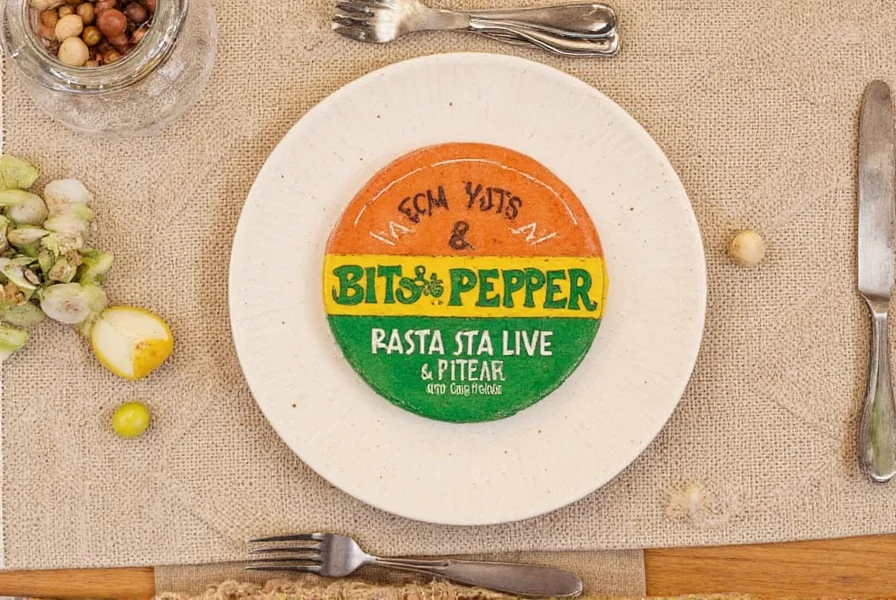"Two bits" is not a cooking measurement but a historical term for 25 cents, originating from the Spanish real system where one "bit" equaled 12.5 cents. This common misconception arises from confusing currency terminology with actual spice measurements like "pinch" or "dash." Proper pepper measurements use standardized terms such as teaspoon, pinch (1/16 tsp), or dash (1/8 tsp), not "bits."
Many home cooks searching for "two bits & pepper" encounter confusion between historical currency terms and modern cooking measurements. This misunderstanding stems from the phrase "two bits" entering everyday language as "something of little value," which people mistakenly associate with small spice quantities like salt and pepper measurements.
Historical Origins of "Two Bits"
The term "two bits" dates back to the late 18th century when the United States used Spanish dollars. These coins were often physically cut into eight pieces called "bits," with each bit worth 12.5 cents. Therefore, "two bits" equaled 25 cents—the precursor to today's quarter.
This historical currency reference appears in the famous cheer "Shave and a haircut, two bits," which originated when barbers charged exactly 25 cents for their services. The phrase became so ingrained in American culture that many now misinterpret it as a measurement term.

Actual Cooking Measurements for Pepper
When recipes call for pepper, they use standardized measurements, not "bits." Understanding these terms prevents recipe failures:
| Term | Volume | Visual Reference |
|---|---|---|
| Pinch | 1/16 teaspoon | Amount between thumb and forefinger |
| Dash | 1/8 teaspoon | Single shake from spice jar |
| Smidgen | 1/32 teaspoon | Less than a pinch |
| Drop | 1/64 teaspoon | Tiny amount from fingertip |
Professional chefs emphasize that consistent measurements matter most with potent spices like black pepper. A "pinch" of pepper typically means enough to lightly coat the surface of what you're seasoning—approximately what fits between your thumb and forefinger when scooping from the container.
Why the Confusion Persists
The "two bits & pepper" misconception spreads through several channels:
- Oral tradition - Older generations sometimes use "bit" colloquially for small amounts
- Recipe misinterpretation - Handwritten recipes with poor penmanship where "tsp" (teaspoon) looks like "bits"
- Cultural crossover - The phrase "salt and pepper" leading people to expect similar paired terms
- Digital miscommunication - Voice assistants mishearing "teaspoons" as "two bits"
Food historians note that pre-metric system measurements did include regional terms like "knob," "gill," and "jigger," but "bit" never appeared in authoritative cookbooks as a measurement unit. The 1896 Boston Cooking-School Cook Book by Fannie Farmer, considered the first modern American cookbook, established standardized measurements that eliminated such ambiguities.
Practical Measurement Tips
For accurate seasoning, follow these professional techniques:
- Use proper tools - Invest in a set of measuring spoons rather than estimating
- Season in stages - Add half the recommended pepper, taste, then adjust
- Consider pepper type - Freshly ground black pepper has different potency than white or red varieties
- Account for heat - Pepper loses potency when cooked; add some during cooking and finish with fresh grind
When following older recipes that use ambiguous terms, convert to modern measurements using these guidelines:
- "Sprinkle" = 1/8 teaspoon
- "Handful" = 1/4 cup for dried spices
- "Dash" = 1/8 teaspoon (standardized since 1950s)
- "Pinch" = 1/16 teaspoon (consistent since early 20th century)
Preserving Culinary Accuracy
Understanding measurement terminology preserves recipe integrity across generations. When digitizing family recipes, replace ambiguous terms with standardized measurements. For historical research, consult culinary archives like the Feeding America project at Michigan State University, which documents evolving measurement systems.
The next time you reach for pepper, remember that precise seasoning separates good cooking from great—no "bits" required. Proper measurements ensure your dishes turn out consistently delicious while honoring culinary traditions without perpetuating common misconceptions about historical cooking measurements and spice quantities.
What does two bits mean in historical context?
Two bits historically refers to 25 cents, originating from the Spanish real system where coins were divided into eight "bits" worth 12.5 cents each. This term entered American vernacular in the late 18th century and appears in cultural references like the cheer "Shave and a haircut, two bits." It has never been an official cooking measurement.
How much is a pinch of pepper actually?
A pinch of pepper equals 1/16 teaspoon, approximately the amount that fits between your thumb and forefinger when scooping from the container. For most applications, this provides enough pepper to lightly coat the surface of what you're seasoning without overwhelming the dish.
Why do people confuse two bits with cooking measurements?
This confusion stems from the phrase "two bits" becoming colloquial for "something of little value," which people mistakenly associate with small spice quantities. Additional factors include mishearing "teaspoons" as "two bits" with voice assistants, poor penmanship in handwritten recipes, and cultural crossover from the common phrase "salt and pepper."
What's the difference between a dash and pinch of pepper?
A dash of pepper (1/8 teaspoon) equals two pinches (1/16 teaspoon each). Visually, a dash represents a single shake from a spice jar, while a pinch is the amount you can hold between thumb and forefinger. For black pepper specifically, a dash provides noticeable seasoning for four servings of most dishes.
How should I measure pepper for consistent results?
For consistent seasoning, use proper measuring spoons rather than estimating. Add half the recommended pepper during cooking, then adjust with freshly ground pepper at the end. Remember that freshly ground black pepper has different potency than pre-ground varieties, and pepper loses some potency when cooked, so finishing dishes with a fresh grind provides the best flavor.











 浙公网安备
33010002000092号
浙公网安备
33010002000092号 浙B2-20120091-4
浙B2-20120091-4